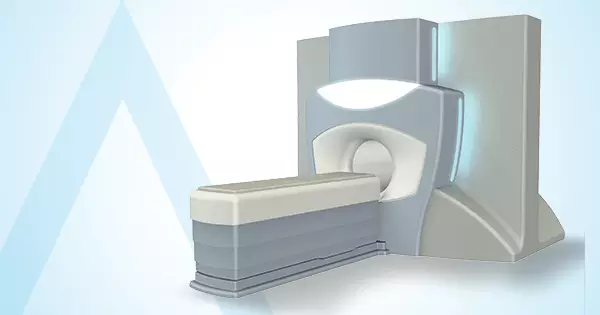What is Scalp Cooling?
Cooling the scalp is an effective method to help prevent hair loss. This treatment helps patients preserve their hair during chemotherapy and experience the treatment process in a more positive way.
Scalp cooling treatment is quite simple. This treatment is performed using a cap consisting of two main parts. This cap is worn on the patient's scalp for a period of time before, during, and after the chemotherapy infusion.
The cap contains an inner cap and an outer cap that are close to the scalp. The inner cover contains the coolant, which circulates on the scalp and helps reduce the temperature. This helps protect hair follicles and limit damage caused by chemotherapy drugs.
How Does the Scalp Cooling Head Work?
Scalp cooling works to limit the damaging effect of chemotherapy drugs used during cancer treatment on hair follicles. Here is a simple explanation of this process:
Chemotherapy and Rapidly Dividing Cells: Chemotherapy attacks rapidly dividing cells. Cancerous tumors consist of these types of cells. In addition, hair follicles also contain rapidly dividing cells. Chemotherapy can also damage healthy hair follicles, an effect that causes hair loss. However, scalp cooling helps reduce this damage.
Vasoconstriction (Narrowing of Blood Vessels): Cold causes the blood vessels in the hair area to narrow. This provides less blood flow to the hair follicles and therefore prevents the chemotherapy drug from reaching the hair follicles.
Reduced Drug Intake: Chemotherapy drugs must enter cells to cause damage. However, cold makes it difficult for these drugs to enter cells.
Decrease in Cell Division: Cold slows down the rapid division of hair follicle cells. This makes chemotherapy less likely to damage these cells.
Decrease in Cell Metabolism: Cold slows down the metabolic processes of cells. This makes it difficult for chemotherapy to kill hair follicle cells.
As a result, scalp cooling increases the likelihood of sustaining chemotherapy treatment while helping prevent hair loss. This method helps cancer patients alleviate their hair loss concerns and experience the treatment process in a more positive way.
Working System
A scalp cooling system is a device the size of a small refrigerator to help cancer patients. This device is located in the treatment room of the hospital or cancer center where you will be treated. It is very simple to use and is not operated by the patient; instead, it is used by one of your clinical team.
This system consists of two main parts:
Inner Cover (Blue): This inner cover is made of soft silicone material and can be shaped according to the patient's head shape. This inner cover forms the part that directly contacts the scalp. The cover contains a series of channels that, when connected to the system, fill it with coolant and perform the cooling process.
Outer Cover (Grey): This outer cover is made of a material called neoprene and is gray in color. The chin strap and cords at the top of the headgear help keep the inner headgear in close and constant contact with your head. This outer cover protects the entire head from external factors.
This system offers technology that helps prevent hair loss during chemotherapy treatment. The inner cap fits your head and protects your hair follicles by transmitting the cooling liquid to your scalp. The outer cover keeps the head firmly and securely in place.
In this way, cancer patients can go through their treatment process more comfortably without worrying about hair loss.
How Long Does the Process Take?
Gradual cooling of the scalp to the desired temperature begins approximately 30 minutes before the chemotherapy infusion begins. The cooling process continues after the chemotherapy infusion is completed and usually continues for at least 90 minutes, and in some cases up to 3-4 hours. This process is used to help prevent hair loss.
Hair Care Recommendations
Hair care is important to keep your hair healthy and strong. Here are some hair care tips:
Combing and Brushing: Combing or brushing your hair daily is a good habit. However, it would be better to use a wide-toothed comb or a delicate comb used for babies. This prevents hair from breakage and damage.
Shampoo and Care Conditioners: When washing your hair, it would be a good idea to use pH-balanced or herbal shampoos. Likewise, you should choose care creams that nourish and strengthen your hair.
Hairpins: If you're wearing your hair up, use ribbons or soft barrettes instead of elastic bands. Elastic bands can damage hair.
Braiding: Try not to braid your hair too much, as tight braids can damage the hair.
Avoid High Heat: Avoid applying high heat to your hair (such as hair dryer, straightener, curling iron). These procedures can dry and damage the hair.
Avoid Chemical Products: Avoid chemical-containing products such as dye, perm, gel, and spray. Choose herbal or fruit-containing products that protect and nourish your hair.
Bedding: Sleeping on silk or satin bedding can help prevent hair breakage.
Hair During Sleep: If you have long hair, it is a good idea to sleep wearing a silk or satin net (bonnet) to prevent it from getting tangled.
Water Temperature: Use warm water instead of hot water when washing hair. Hot water can cause hair to dry out.
Gentle Application: Apply the shampoo and conditioner to the hair gently, do not be harsh.
Hair Drying: If possible, let your hair dry naturally or pat dry the hair gently with a soft towel, do not rub harshly.
Washing Frequency: Avoid washing your hair more than necessary. Washing twice a week is usually sufficient.
Chemotherapy and Cooling Treatment: If you are receiving chemotherapy or scalp cooling treatment, try not to wash your hair for 24-48 hours after treatment. This can help protect hair follicles.
Hair care can improve the health and appearance of your hair and help prevent hair loss, especially during cancer treatment.















